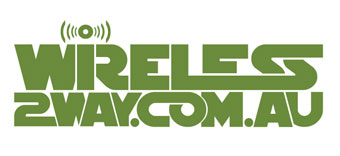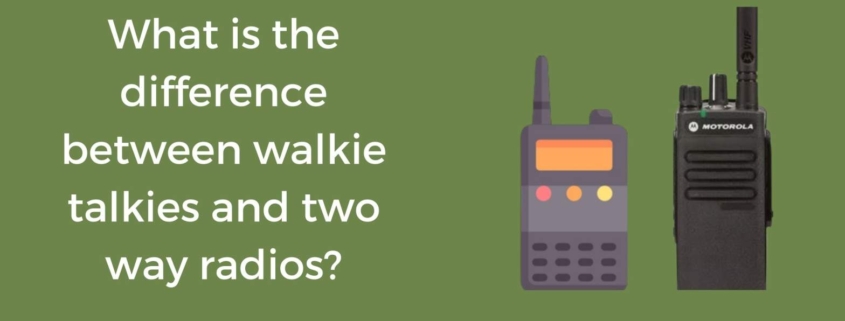What is the difference between walkie talkies and two-way radios?
Although the definitions of a walkie-talkie and two-way radio are similar, there are some variances. Both can transmit and receive radio broadcasts, and the phrases are frequently used interchangeably.
Differences between the two
Now let us look at some of the critical distinctions amongst walkie talkies and two-way radios:
Walkie talkie-
A walkie talkie is a portable two-way radio that may be held in one hand. This form of radio makes it easy to communicate on the radio while wandering around. In layman’s terms, a walkie talkie is a mobile handheld two-way radio, sometimes known as a radio walkie talkie. We can use either a long-range or a short-range walkie talkie. To many, walkie-talkies and two-way radios appear to be the same thing.
As discussed before, walkie talkies are often short-range, low-power devices that do not require a licence. The longest distance you may go with these gadgets is around 3 kilometres. They just have the most fundamental functionality, such as Press to Talk, volume change, and channel selection. The quality of low-cost consumer walkie talkies is not equivalent to that of professional two-way radio competitors.
Commercial walkie talkies have a more tough appearance and are coated with metal covers, making them more resilient to working in various circumstances. In addition, professional walkie talkies have specific frequencies allotted to them and only operate on these wavelengths. As a result, army personnel prefer them since they must conduct two-way communication at certain frequencies.
The advancement of walkie talkies has been enormous. Commercial walkie talkies are compact, transportable, and operate in certain bands. Even strong walkie talkies are limited to a fixed number of watts. Personal walkie talkies have also grown in popularity. They come in a variety of colours and are constructed of plastic.
Two-way radios-
Most corporate radios are referred to as two-way radios. These have higher power, so they have a more extended range, and they are licenced, therefore you will need to apply to Ofcom for a Two Way Business Radio Licence to use them.They have additional functions such as Mandown, lone worker, Selcall, extra channels (subject to licence), vibration alert, and so on.
When a two-way radio is not a mobile handheld device but is placed in an automobile or installed in a PSU and positioned on a desk, it is not referred to as a walkie-talkie known as a mobile radio. Walkie-talkies, as the name implies, allow you to stroll about. A two-way radio is a radio that can work in both directions, that is, it can broadcast and receive radio signals, as compared to a radio that can only receive.
A two-way radio can work in either half-duplex or full-duplex mode. Half-duplex radio allows the radio to broadcast or receive in turn, but not both simultaneously. Full-duplex enables the radio to send and receive data simultaneously. Because it can broadcast and receive radio signals, a two-way radio is also known as a transceiver. In either scenario, the radio has two modes of operation: make and receive.
Professional and corporate licenced transportable two-way radios vary from Walkie-Talkies. They have more technical features and functionalities and may be used with repeaters to increase their range and frequencies to assure continuous functioning.
Walkie-talkie and two-way radio applications
Walkie talkies have shown to be beneficial for more than just ordinary conversation. It is the most often utilised communication technology in the military. All military forces rely on walkie talkies to communicate commands and other information. Using a walkie talkie during a disaster has also shown to be beneficial. They are so popular owing to their ease of use and mobility. They were initially created during World War II and then made available to the general population. It’s also an excellent gadget for connecting during an emergency because it doesn’t rely on towers to relay signals and can thus be utilised to convey messages without fail.
To communicate, two-way radios are the absolute best as they do not require any form of tower. These are also free to operate without electricity, making them perfect for use in rural areas. Communication is simple to carry out from a permanent place. There is also no worry about telephone wires collapsing or being damaged due to inclement weather. It is simple and quick to converse with individuals in your band breadth with these portable transmitters.



